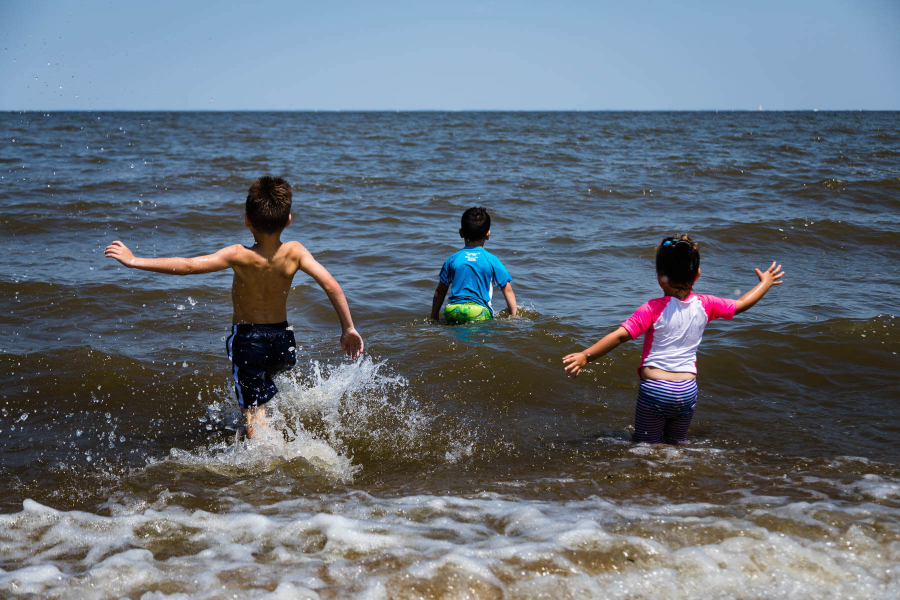Is it safe to swim in Chesapeake Bay waters?

As the summer heat kicks in, the Chesapeake Bay becomes a great place to cool off. But is the water always safe to be in?
The answer to that question depends on where you are. There a hundreds of beaches along the Bay and its tidal tributaries, and the water quality can change with a single rain or runoff event.
If you're out on a boat, it becomes even more difficult to answer, because the Bay is so large and bacteria levels are always fluctuating. The rule of thumb is to avoid the water 48 hours after a rainstorm, as the rain carries bacteria and nutrient runoff into the water.
If you plan to swim at a beach or park, you can also look up the specific location and find a water quality update.
How to find a water quality update
The quickest way to find out if a beach or river along the Bay is safe to swim in is to visit a park website. Public beaches should have a state or county website that's regularly updated with swim advisory information.
You can also visit the following state websites and apps to find your location. These resources use data from professionals who are regularly testing water quality.
- Maryland Healthy Beaches Program
- Maryland Eyes on the Bay
- Virginia Waterborne Hazards Control Programs
- New York State Beach Water Quality Information
- Delaware Department of Natural Resources - Recreational Waters
- Pennsylvania Department of Conservation and Natural Resources - Swimming
For the entire Atlantic Coast, check out the popular mobile app The Swim Guide, which gets up-to-date data from a number of Chesapeake waterkeepers.
What if I can't find a water quality update?
Not every beach or river is updated frequently enough to determine if its safe to swim in or not. If you can’t find an update on the health standard of your local waterway, you can follow a few best practices to keep safe.
Stormwater runoff increases bacteria levels, so it’s best to avoid water for at least 48 hours after a significant rainstorm. Do not enter the water if you have cuts or open sores and wash your hands after swimming. Also, consider the amount of time you’re spending in the water—if you are kayaking or boating and are only getting splashed, the chances of you getting sick are much less than if you were to go swimming.
Algae blooms are another thing to avoid. These blooms are the result of excess nutrients in the water and look like blue, bright green, brown or red paint floating on the surface. They are especially dangerous for dogs and one of the main threats to the Bay’s entire ecosystem.
What are the health risks?
High levels of bacteria in the water can cause a variety of health issues, including gastrointestinal illness, skin and ear infections, and respiratory disease. One of the worst bacterial infections—vibrio—infects thousands of people each year and can cause severe skin ulcers, gangrene and deadly blood infections in people with exposed cuts. Pets, too, are susceptible to infections, which can turn fatal in a short amount of time.
Despite these health concerns, beaches along the tidal rivers and the Chesapeake Bay are often safe for swimming, fishing and boating. Visit our public access map to find a spot near you, and help keep the water clean by taking your trash with you, picking up pet waste, keeping sewage on your boat and other important practices.

Comments
There are no comments.
Thank you!
Your comment has been received. Before it can be published, the comment will be reviewed by our team to ensure it adheres with our rules of engagement.
Back to recent stories